Types of Car Sensors: Functions, Working, Location [with PDF]
There are a lot of sensors used in modern-day automobiles that help in the proper functioning of the vehicle, reducing emissions, increasing efficiency as well as improving the safety of the vehicle. There are different sensors in a car, each and every sensor has a specific function and location assigned to it. The data from all the sensors is sent to the Engine Control Unit (ECU) which then interprets it and takes action accordingly such that the vehicle functions in an optimal manner.
So, today at The Mechanical post we’ll take a look at the Different types of sensors commonly found in cars/automobiles along with each of their functions and location.
You can get your Free copy of the PDF on the Different types of sensors used in cars / automobiles at the end of the article.
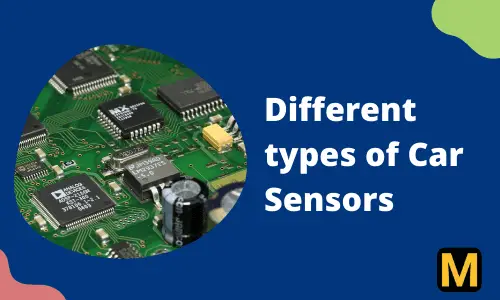
Following is the list of different types of sensors used in cars:
- Mass Air Flow Sensor (MAF)
- Throttle position sensor
- Crankshaft position sensor
- Camshaft position sensor
- Manifold Absolute Pressure Sensor (MAP)
- Knock sensor
- Fuel Temperature sensor
- Coolant Temperature Sensor (CTS)
- Exhaust temperature sensor
- Oxygen sensor
- Vehicle speed sensor
- NOx sensor
- Engine oil level sensor
- Rain sensor
1. Mass Air flow Sensor (MAF)
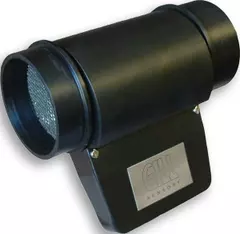
Function
To determine the Mass flow rate of the air entering the I.C engine such that proper air-fuel ratio can be maintained.
Location
The MAF sensor is situated between the air filter and the throttle body.
For what purpose is the Mass Airflow Sensor used?
The mass airflow sensor also commonly known as the MAF sensor is a type of sensor used in cars to calculate the amount of air that enters the I.C engine during the intake stroke.
The MAF sensor along with data from other sensors helps the ECU to determine how much fuel must be added by taking into account the amount of air available. This results in optimized operating conditions as well as helps in reducing pollution.
2. Throttle position sensor
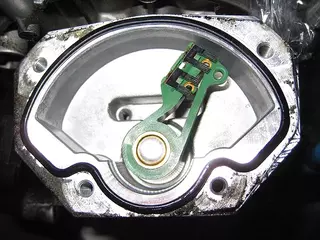
Function
The function of the throttle position sensor is to sense the position of the throttle plate which helps the ECU in deciding how much fuel must be added.
Location
The throttle position sensor is mounted onto the throttle body.
What is a Throttle position sensor?
When the driver presses the accelerator pedal it opens the throttle plate accordingly. So in order for the ECU to understand how much the driver has pressed the pedal, a throttle position sensor is used.
The sensor does not measure the position of the pedal being pressed by the driver. Rather it measures the position of the throttle plate at the beginning of the intake manifold which is operated by the pedal.
The throttle position sensor helps the ECU to control the amount of fuel in proportion to the air entering the cylinder and thereby varying the speed of the engine.
3. Crankshaft position sensor
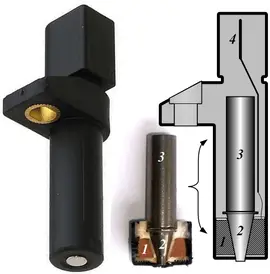
Function
The function of the Crankshaft position sensor is to measure the position of the crankshaft that helps the ECU to understand the engine speed, the position of the piston inside the cylinder, and much more.
Location
The Crankshaft position sensor is mounted to the engine block such that it faces the timing rotor which is mounted on the crankshaft.
What is a Crankshaft position sensor and why is it used?
The crankshaft position sensor plays a crucial role and helps the Engine Control Unit (ECU) understand data that is very important for the proper functioning of the engine.
With the help of the Crankshaft position sensor, the ECU can get to know at what position is the piston inside the cylinder is at a given instant. The information provided by the crankshaft position sensor also helps the ECU in controlling the injection of the fuel and the ignition system timing.
4. Camshaft position sensor

Function
The function of the Camshaft position sensor is to measure the position of the camshaft at a given instant. This helps the ECU to better understand and adjust the fuel injection as well as ignition system timing.
Location
The Camshaft position sensor is located near the cylinder head such that it is close to the camshaft.
What is a Camshaft position sensor?
The camshaft position sensor and the crankshaft position sensor both work together in order to give the ECU a complete picture of what processes are going on in the engine at the particular moment.
The Camshaft position sensor can be used by the ECU to perform actions like cylinder selective knock control or sequential fuel injection.
We found something interesting for you to discover:
Different types of engines
What is CVT Transmission
5. Manifold Absolute Pressure sensor (MAP)
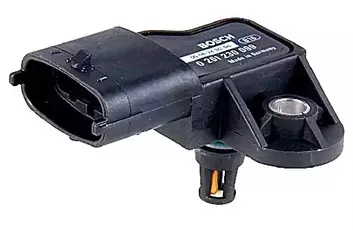
Function
The function of the Manifold absolute pressure sensor is to sense the pressure of the intake air and then accordingly decide the air-fuel proportions to be sent to the engine.
Location
The Manifold Absolute Pressure sensor is located on the intake manifold of the engine.
What is a Manifold absolute pressure sensor?
The Manifold Absolute Pressure sensor or the MAP sensor is a device situated in the intake manifold and is used to calculate the pressure of air going to the engine. The higher the pressure, the higher will be the mass of air and hence more fuel can be used.
This sensor helps the ECU in determining the amount of air and fuel that has to be sent to the engine.
6. Knock sensor
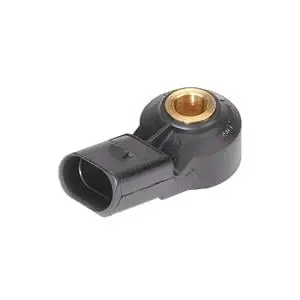
Function
The function of the Knock sensor is to pick up the vibrations and sound coming from the engine and convert them into electrical signals.
Location
The Knock sensor is attached directly to the outside of the engine block. However, in some instances, one can find the sensor beneath the intake manifold.
What is a Knock sensor and how does it work?
The knock sensor is used to sense the sharp sounds and vibrations coming from the engine due to premature combustion. This type of premature combustion is known as knocking in an I.C engine. In knocking the combustion starts even before the spark plug ignites the mixture which is bad for the engine.
Thus to prevent knocking a knock sensor is used, which detects knocking in the engine and then converts it into electrical signals which are then sent to the Engine Control Unit (ECU). The ECU then processes the data and then decides whether to change the ignition timing or not.
7. Fuel temperature sensor
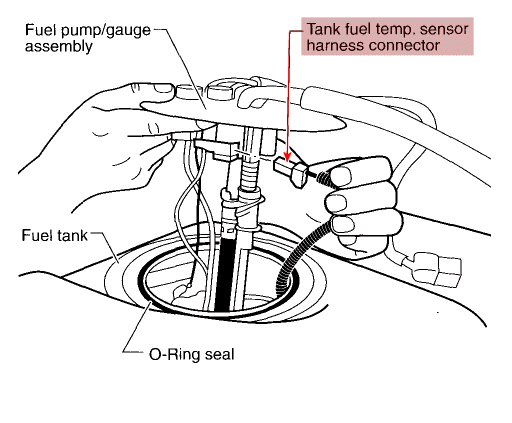
Function
The function of the Fuel Temperature sensor is to sense the temperature of the fuel and on that basis, the amount of fuel to be sent to the engine is decided.
Location
The Fuel Temperature sensor is located in the fuel tank and is often part of the fuel pump assembly.
What is a Fuel temperature sensor?
The fuel density changes with a change in temperature. The higher the temperature, the lower will be the density and vice versa. A hot fuel means lower density and therefore more amount of fuel must be injected into the cylinder.
Thus, it is necessary to monitor the fuel temperature and compensate for the change in fuel density. The fuel temperature sensor helps the ECU to improve the injection accuracy as well as meet emission standards.
You might also like to read: What is the Difference between Disc and drum brakes?
8. Coolant Temperature Sensor (CTS)
Function
The function of the Coolant temperature sensor is to tell the ECU that how warm the engine is running by measuring the coolant temperature.
Location
The Coolant Temperature sensor is usually located near the thermostat valve in the coolant passage.
What is a Coolant temperature sensor and why is it important?
The coolant temperature sensor helps the ECU understand whether the engine is running hotter or colder. Then accordingly the steps are taken by the ECU to maintain the temperature of the engine at an optimum temperature. This is important as a cold engine requires a different amount of fuel as compared to a hot engine.
9. Exhaust gas temperature (EGT) sensor
Function
The function of the Exhaust gas temperature is to measure the temperature of the hot exhaust gases that helps the ECU in regulating the air-fuel ratio.
Location
The exhaust gas temperature or EGT sensor is located in the exhaust manifold.
What is an EGT sensor and why is it used?
Just as the name suggests, the EGT or the Exhaust Gas Temperature sensor is used to determine the temperature of the exhaust gas.
The EGT sensor is useful for the ECU to confirm that the proper air-fuel mixture is being sent to the engine. Changes in the air-fuel ratio can result in a change in the exhaust gas temperature hence it needs to be monitored by the EGT sensor.
10. Oxygen sensor
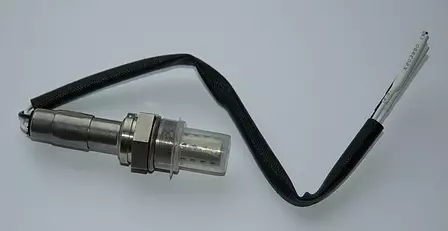
Function
The Oxygen sensor is used to measure the amount of oxygen present in the exhaust gas.
Location
The Oxygen sensor is located between the engine and the catalytic converter in the exhaust manifold.
What is an Oxygen sensor?
The Oxygen sensor is used to measure the amount of oxygen that comes out of the engine and then reports it to the ECU (Engine control unit). If the sensor senses more amount of oxygen it means that the mixture is rich whereas if less oxygen is detected then it would mean that the mixture is lean.
So on the basis of the data obtained from the Oxygen sensor, the ECU decides the amount of fuel entering the cylinder and thereby compensates for the excess fuel or excess of air.
learn more on what is a difference between a Station wagon or a Cabriolet or a Hatchback? Check out our article on Different types of Car body styles.
11. Vehicle speed sensor (VSS)
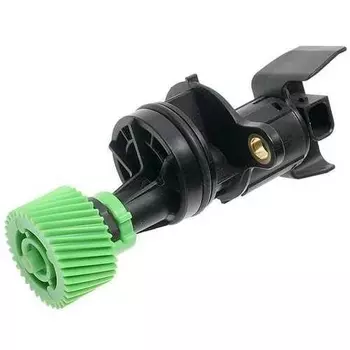
Function
As the name suggests, the vehicle speed sensor is used to measure the speed of the transmission output shaft or the vehicle wheel and send it to the ECU.
Location
The vehicle speed sensor (VSS) is located near the transmission’s output shaft.
What is a Vehicle speed sensor (VSS) and what does it do?
The vehicle speed sensor helps the Engine control unit in a number of ways by telling the real-time speed of the vehicle. The data provided by the VSS is also used by driver assistance systems such as ABS, TCS, ESP or ACC, motor control units to determine the wheel speed.
12. NOx sensor
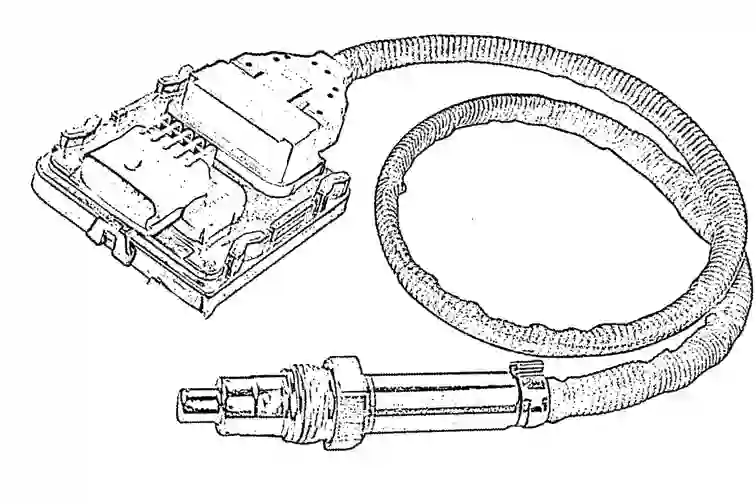
Function
The function of a NOx (nitrogen oxides) sensor in an automobile is to monitor and measure the levels of nitrogen oxide emissions in the vehicle’s exhaust gases.
Location
The NOx sensor is typically located in the exhaust system, downstream of the catalytic converter.
What is a NOx sensor (VSS) and how does it work?
A NOx (nitrogen oxides) sensor is a device used in automobiles to monitor and measure the levels of nitrogen oxide emissions in the exhaust gases. It helps ensure compliance with emission regulations and reduce harmful pollutants.
The sensor works by utilizing a chemical reaction involving oxygen ions. Inside the sensor, a ceramic element coated with electrodes is exposed to the exhaust gases. The element contains a pump cell and a diffusion cell separated by a solid electrolyte.
During operation, the pump cell creates a constant flow of oxygen ions by applying a voltage across the electrolyte. These oxygen ions migrate through the electrolyte to the diffusion cell. In the diffusion cell, the oxygen ions react with nitrogen oxides in the exhaust gases.
The reaction between the oxygen ions and nitrogen oxides generates an electrical current. This current is proportional to the concentration of nitrogen oxides in the exhaust gases. The sensor measures this current and converts it into a voltage signal.
The voltage signal is then sent to the engine control unit (ECU), which uses this information to adjust the air-fuel mixture, exhaust gas recirculation (EGR), or other engine parameters. By optimizing these parameters, the ECU can reduce nitrogen oxide emissions to meet regulatory standards.
13. Engine oil level sensor
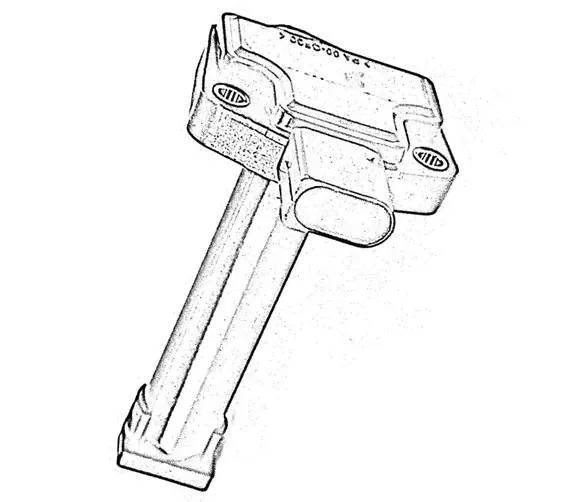
Function
The function of an engine oil level sensor is to monitor the quantity of oil in the engine’s oil sump or oil pan.
Location
Many vehicles have the oil level sensor integrated into the oil pan. It is often located at the bottom of the pan or on the side, accessible from the bottom side of the car.
What is a Engine oil level sensor and how does it work?
An engine oil level sensor works by detecting the level of oil in the engine’s oil sump or oil pan. The specific workings can vary depending on the type of sensor, but here are two common methods used:
- Electrical Resistance Method: This method is based on changes in electrical resistance as the oil level changes. The sensor consists of a float or a conductive strip that is partially submerged in the oil. As the oil level rises or falls, the amount of the sensor covered by oil changes.
When the sensor is covered by oil, it conducts electricity more effectively, resulting in lower resistance. Conversely, when the sensor is exposed to air due to lower oil levels, it has higher resistance. The sensor is connected to an electrical circuit that measures the resistance, and based on the resistance value, it determines the oil level.
- Ultrasonic Method: This method uses ultrasonic waves to measure the oil level accurately. The sensor includes a piezoelectric transducer that emits ultrasonic pulses into the oil. These pulses travel through the oil and reflect back when they encounter the oil’s surface.
The transducer then receives the echoes of the ultrasonic pulses. By calculating the time it takes for the pulses to travel to the oil surface and return, the sensor determines the distance to the oil surface. This distance measurement is then used to determine the precise oil level in the oil sump.
The information is typically sent to the engine control unit (ECU) or displayed on the vehicle’s instrument panel to alert the driver about the oil level. This allows the driver to monitor the oil level and take necessary action.
It’s important to note that the specific design and implementation of the oil level sensor may vary among different vehicle manufacturers and models.
14. Rain Sensor
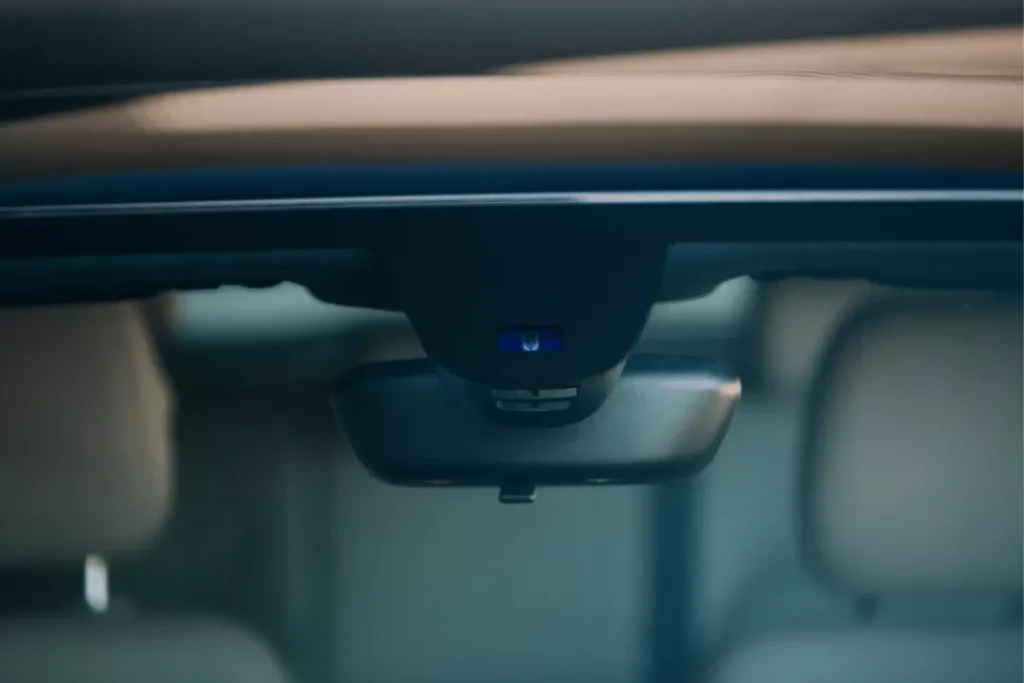
Function
The function of a rain sensor in an automobile is to detect the presence and intensity of rain or moisture on the windshield and automatically control the operation of windshield wipers.
Location
The most common location for the rain sensor is attached to the windshield near the rearview mirror.
What is a Rain sensor and how does it work?
A rain sensor is a device used in automobiles to detect the presence and intensity of rain or moisture on the windshield. It automatically controls the operation of windshield wipers based on the prevailing weather conditions.
Rain sensors typically use optical or infrared technology to monitor the windshield surface. They emit beams of light onto the windshield and detect changes in reflection caused by raindrops or moisture.
This information is then sent to the wiper control module, which activates the windshield wipers and adjusts their speed according to the rain intensity detected by the sensor. The rain sensor enhances driving convenience, improves visibility, and promotes safety by ensuring optimal clearing of the windshield in varying weather conditions.
So, that’s a brief on the different types of car sensors. Apart from this, there are many more sensors used in an automobile, however, we have covered the most common and basic ones. Can you name some other sensors that you know of? Let us know in the comments, we are willing to hear from you.
Till then Keep Learning!



![Disc vs drum brakes: What is the difference? [with PDF]](https://mechanicalpost.site/wp-content/uploads/2021/09/Disc-brakes-vs-drum-brakes.png)
